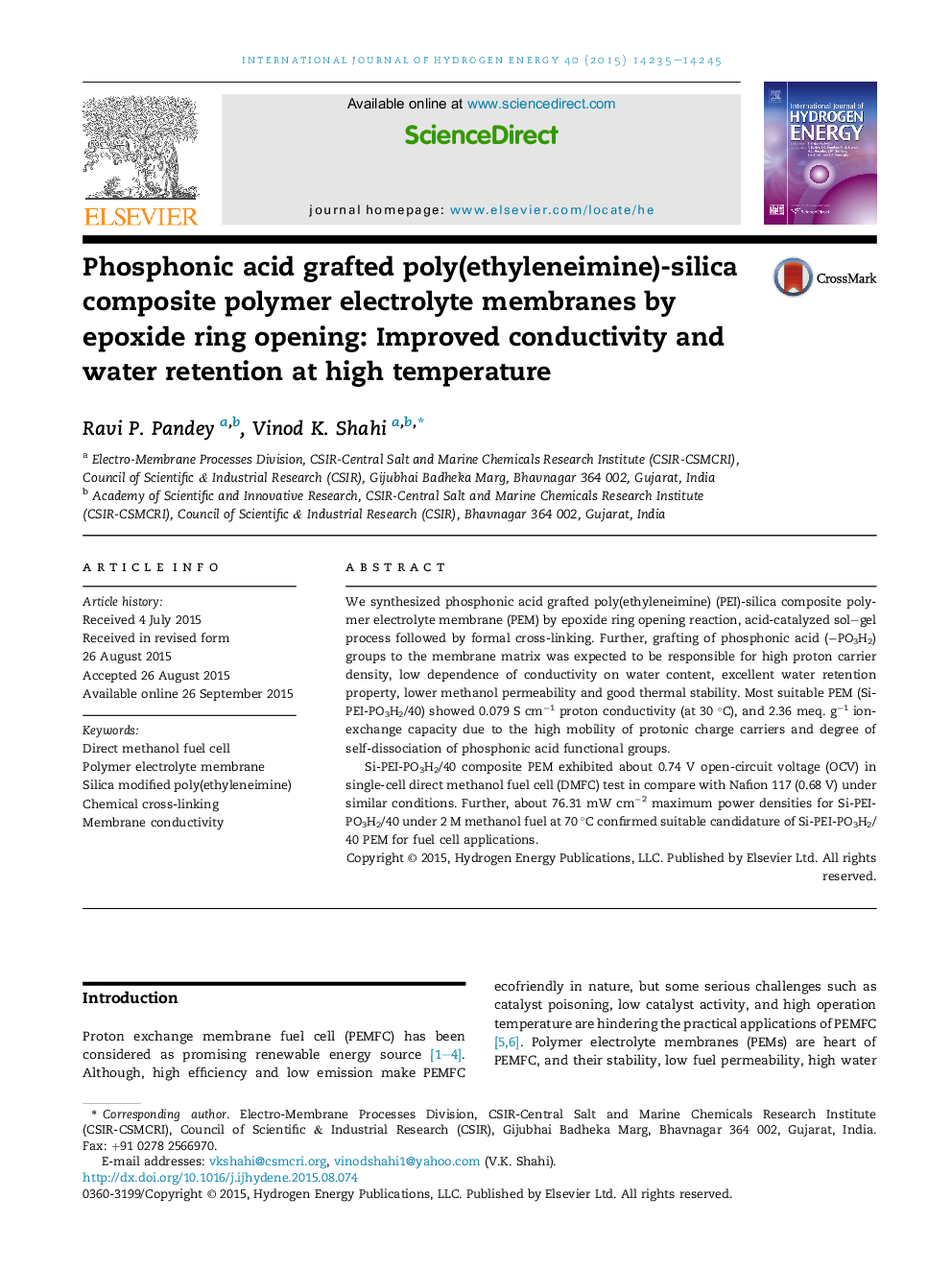| Article ID | Journal | Published Year | Pages | File Type |
|---|---|---|---|---|
| 1269151 | International Journal of Hydrogen Energy | 2015 | 11 Pages |
•Phosphonic acid grafted poly(ethyleneimine)-silica composite PEM was synthesized.•Silica modified PEM with high stability, conductivity, and bound water content.•Better DMFC performance for reported PEM in compare with Nafion 117®.•PEM architecture for self-humidification and good conduction at high temperature.
We synthesized phosphonic acid grafted poly(ethyleneimine) (PEI)-silica composite polymer electrolyte membrane (PEM) by epoxide ring opening reaction, acid-catalyzed sol–gel process followed by formal cross-linking. Further, grafting of phosphonic acid (−PO3H2) groups to the membrane matrix was expected to be responsible for high proton carrier density, low dependence of conductivity on water content, excellent water retention property, lower methanol permeability and good thermal stability. Most suitable PEM (Si-PEI-PO3H2/40) showed 0.079 S cm−1 proton conductivity (at 30 °C), and 2.36 meq. g−1 ion-exchange capacity due to the high mobility of protonic charge carriers and degree of self-dissociation of phosphonic acid functional groups.Si-PEI-PO3H2/40 composite PEM exhibited about 0.74 V open-circuit voltage (OCV) in single-cell direct methanol fuel cell (DMFC) test in compare with Nafion 117 (0.68 V) under similar conditions. Further, about 76.31 mW cm−2 maximum power densities for Si-PEI-PO3H2/40 under 2 M methanol fuel at 70 °C confirmed suitable candidature of Si-PEI-PO3H2/40 PEM for fuel cell applications.
Graphical abstractFigure optionsDownload full-size imageDownload as PowerPoint slide
